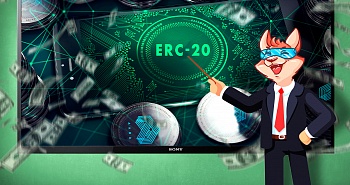How blockchain bridges between Ethereum and Binance Smart Chain work
The free exchange of assets between different blockchain networks is only possible through bridges. Their use will give AKRA cryptocurrency holders more freedom in terms of token circulation: not only to transfer it within one network but also to exchange it with various ecosystems.

What are blockchain bridges

The AKRA Network project team is well aware of the importance and benefits of using blockchain bridges, so we have included the implementation of bridges in the ecosystem development roadmap.
A blockchain bridge is a special platform that enables the transfer of tokens or other information from one blockchain to another. Without this bridge, cryptocurrency interoperability is next to nil: it is hindered by the unique algorithms of each blockchain, dramatically changing cryptocurrency exchange rates and other factors.
The AKRA token is created to interact correctly with smart contracts on decentralized (Pancakeswap, Uniswap) and centralized (Coinmarketcap, Coingecko) exchanges. Without the use of bridges, the cross-chain exchange of cryptocurrency can be implemented using centralized and decentralized exchanges. An exchange cross-chain against the background of blockchain bridges is not always the best cryptocurrency exchange solution, but as an alternative, it can be used.




Exchanges have large internal pools responsible for the trade, and the procedure itself is nominally performed on their internal wallets. If the number of tokens required for an equivalent exchange is not available on the exchange’s wallets, the cryptocurrency cannot be exchanged.
An alternative to the exchanges is P2P exchanges, but which operate on the basis of the same exchanges. Here, the exchange is carried out between token holders directly and often at a better rate, but there are subtleties and risks.
Amid the exchange crossing of cryptocurrencies, blockchain bridges give token holders more options for exchanging their tokens between different ecosystems. They operate outside of centralized exchanges in the world of decentralized finance (DeFi), in fact enabling transactions at the level of the blockchains themselves.

This operating mechanism gives blockchain bridges a number of advantages over centralized exchanges:





As with exchange on the exchanges, tokens exchanged through bridges have to be listed. This is required so that the platform can identify a particular token. There are quite a few in the Ethereum ERC-20 network standard, and without identification, the exchange will be confusing. To be included in the list of cross-chain tokens of the bridge, the listing can be done in a simplified form by a vote of the validators.
Holders of wrapped AKRA tokens will be able to send cryptocurrency via bridges to Ethereum and from this ecosystem to the Binance Smart Chain network, thereby bypassing the chain of intermediary exchanges, saving on fees and reducing the number of actions during the exchange to a minimum.
What are the bridges between Ethereum and Balance Smart Chain
There are many blockchain bridges that ensure the transfer of tokens between Ethereum and Binance Smart Chain, but the three leaders should be given the most attention.
Binance Smart Chain Bridge
The service makes it possible to move digital assets (tokens and smart contracts) to the Binance Smart Chain. Through an additional Binance Wallet, asset holders can perform both cross swap between BNB and BSC and cross-chain transactions. The service supports ether-like tokens of the ERC-20 standard and TRON cryptocurrencies of the TRC-20 standard, which are converted to BEP-20, based on the native currency BNB, after exchange.




OpenBiSea
The bridge organizes an exchange between the Ethereum network and Binance Smart Chain with the ability to convert assets and get back with 100% proof of value. Additionally, OpenBiSea offers an off-the-shelf NFT conversion and sale solution.
Komodo
The service of the blockchain project called Simple Trading View allows one cryptocurrency asset to be stored simultaneously in two or more ecosystems, making instant exchanges at real rates of digital currencies.
Regardless of the choice of a particular platform, for token holders, the benefits of bridges are clear. They may differ in transaction processing speed, interface, and terms of use, but the operating mechanism is the same for all.
Binance Bridge was chosen for the AKRA project as the most well-known and trustworthy.
How blockchain bridges work
Regarding the AKRA token, the work of bridges will look like this:




For the AKRA holder, the exchange will be similar to the procedure for transferring funds from one wallet to another. The actual transfer will not take place, though: the token is frozen in one network and replaced by a fully identical token, but already in another network.
Bridges will enable the free circulation of the AKRA cryptocurrency between blockchain networks. Each procedure will be carried out quickly, securely and with minimal fees, opening up prospects even for micro-investments.

Talented programmers who have gained good experience in other blockchain projects work with AKRA Network software. They came to us because they were interested in the AKRA project and appreciated the prospects of the ecosystem. However, we do not exclude unforeseen situations that may lead to an increase in the project implementation time. Such situations may be related to the programming of the service and at the level of interaction with third-party sites. Therefore, we ask you to follow the news of the project and you will be able to become one of the first to appreciate all the advantages of the AKRA Network ecosystem and all its services.













